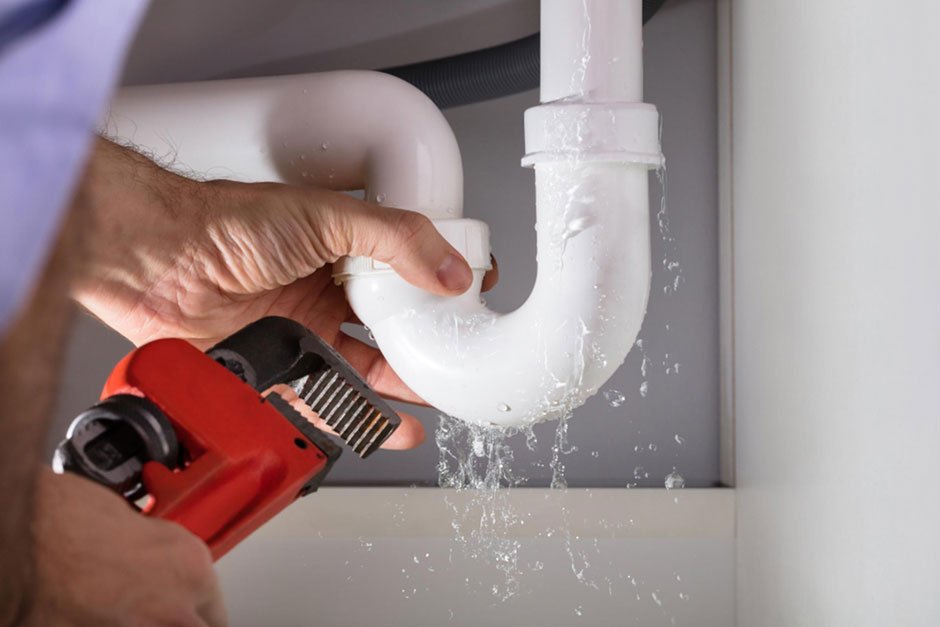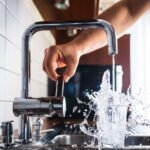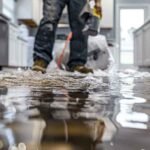Unusual Water Pressure Changes
Sudden fluctuations in water pressure indicate clogs, pipe damage, or system-wide problems. Clogged aerators, mineral buildup in pipes, or leaks upsetting water flow may lead to low pressure. Over time, corrosion in aging pipes lowers pressure by limiting movement. Municipal supply issues, like maintenance or mainline breakdowns, could impact domestic water supplies.
On the other hand, excessive pressure strains pipes and raises the likelihood of leakage. A broken pressure regulator lets water run at dangerous levels, degrading joints and fixtures. Unexpected changes in pressure between high and low points to a plumbing system or water supply line problem requiring investigation. By means of leak detection, aerator cleaning, and pressure level monitoring, long-term damage is avoided, and the system remains operational.
Persistent Drain Clogs and Gurgling Sounds
Gurgling noises and slow draining indicate either plumbing system ventilation issues or pipe clogs. The gradual accumulation of food debris, soap scum, hair, and grease inside drains impedes water flow. Blockages worsen with time, resulting in standing water in sinks, tubs, and showers. Inappropriate disposal of non-flushable objects also results in regular toilet obstructions needing expert intervention.
Gurgling sounds are produced when trapped air in pipes tries to escape while water passes through. Vent pipes control flow, therefore avoiding suction that disturbs drainage. Negative pressure develops inside pipes when vents clog, or damage causes air to be pulled via drains and produces popping sounds. Early resolution of these problems guarantees unrestricted wastewater flow without restriction and helps prevent backups.
Discolored or Odd-Smelling Water
Changes in water color or odor point to either mineral deposits, pipe corrosion, or contamination. Commonly encountered in homes with galvanized steel plumbing, brown or rusty water points to iron or sediment buildup in older pipes. This discoloration, necessitating pipe replacement or system flushing, impacts both taste and appearance. Usually resulting from bacteria in water heaters or well systems, a rotten egg smell indicates the existence of hydrogen sulfide gas.
Flushing the heater and changing the anode rod eliminates bacterial growth if the smell is limited to hot water. Municipal water treatments produce chlorine or chemical smells; these shouldn’t last long after running the tap for a few minutes. Finding the cause of discoloration or smells guarantees that the water stays safe for everyday consumption.
Backflow Contamination and Water Safety
When pressure reversals allow wastewater to mix with clean water, plumbing systems’ cross-connections expose hazards of contamination. Backflow incidents contaminate the supply with dangerous chemicals, therefore compromising the quality of drinking water. Burst pipes or heavy demand generate sudden pressure drops that produce suction, drawing tainted water into home plumbing.
Using specialist valves, expert backflow installation services prevent reverse flow, therefore safeguarding water supplies. These devices guarantee only clean water reaches faucets by blocking possible pollutants from entering the system. For commercial buildings, irrigation systems, and households with supplementary water sources, municipal codes frequently call for backflow prevention. Backflow preventer maintenance and regular inspections help to keep plumbing systems safe and compliant.
Leaks and Hidden Water Damage
Small leaks frequently go unnoticed until they cause extensive damage to walls, floors, and ceilings. Dripping faucets, wet areas, or inexplicable water stains point to joint failures, pipe cracks, or broken seals. Early detection of even small leaks helps to save water and save utility costs. More difficult hidden leaks behind walls or underground pipes cause structural damage and mold growth. Before obvious symptoms show up, water meters and pressure testing may detect leaks. Ignoring leaks lets moisture buildup, weakening building materials and promoting pest infestations drawn to moist surroundings. Early leak repairs preserve structural integrity as well as plumbing efficiency.
Conclusion
Strange plumbing behavior indicates underlying problems that require immediate attention. Potential system problems are indicated by changing water pressure, slow drains, strange water coloring, and hidden leaks. Solving drainage issues and preventing backflow contamination helps to safeguard residential infrastructure as well as water quality. Monitoring these warning signs allows you to keep your plumbing system reliable and efficient, avoiding expensive repairs and unexpected emergencies.






Leave a Reply